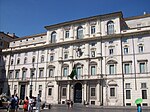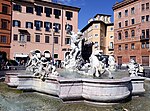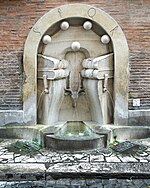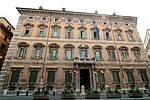Piazza Navona
Baroque architecture in RomePiazzas in RomeRome R. VI ParioneSculptures by Gian Lorenzo Bernini

Piazza Navona (pronounced [ˈpjattsa naˈvoːna]) is a public open space in Rome, Italy. It is built on the site of the Stadium of Domitian, built in the 1st century AD, and follows the form of the open space of the stadium. The ancient Romans went there to watch the agones ("games"), and hence it was known as "Circus Agonalis" ("competition arena"). It is believed that over time the name changed to in avone to navone and eventually to navona.
Excerpt from the Wikipedia article Piazza Navona (License: CC BY-SA 3.0, Authors, Images).Piazza Navona
Piazza Navona, Rome Municipio Roma I
Geographical coordinates (GPS) Address Nearby Places Show on map
Geographical coordinates (GPS)
| Latitude | Longitude |
|---|---|
| N 41.899 ° | E 12.4731 ° |
Address
Fontana dei Quattro Fiumi
Piazza Navona
00186 Rome, Municipio Roma I
Lazio, Italy
Open on Google Maps










